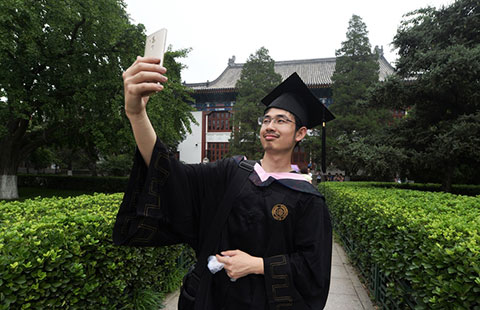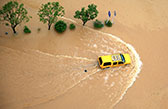Butterflies offer climate scientists ecological insights
By Cang Wei in Nanjing (China Daily) Updated: 2016-07-06 07:29
The Ministry of Environmental Protection has started to use biological indicators, such as butterflies and birds, to monitor and predict nationwide environmental changes.
The program will involve the participation of 53 colleges and institutes across the country, and the statistics collected will be used to analyze climate change and its impacts on vegetation.
"The biological indicators, including certain kinds of insects and birds, feed on just one kind or a few kinds of plants," said Li Zhaohui, director of Nanjing Xiaozhuang University's Institute for Applied Ecology.
"By monitoring their numbers and migrations, we can better understand changes in vegetation and the biological environment," Li said.
Zhu Shude, a professor of entomology at Yangzhou University, said butterflies were particularly sensitive to their environment, making them an ideal biological indicator.
"Only flowers, grasses and trees can attract butterflies. They are a widely recognized biological indicator that don't live in empty fields or on crops."
According to Li, Britain started programs using biological indicators as early as 1976. Similar programs have also been adopted elsewhere in Europe, North America, Hong Kong and Taiwan.
"The Chinese mainland has piloted the program in some provinces, including Jiangsu and Guangdong, since 2009," Li said. "The government is paying greater attention to biodiversity and environmental protection as it starts to adopt new methods to monitor the environment."
According to Li, who is also an expert in the China Butterfly Observation Program, there are more than 16,000 kinds of butterflies in the world, and about 10 percent of them are found in China.
Dozens of observation centers have been established in Jiangsu province to monitor the insects, and elementary school pupils have been encouraged to get involved.
Encouraging students to participate can also increase environmental awareness in society, Li said.
Ma Fangzhou, an assistant researcher at the Nanjing Institute of Environmental Sciences, suggested that China learn from developed countries that use unified methods to make their observations more scientific.
Guo Jun contributed to this story.
- Li: Ensure safety in flood areas
- China's defense ministry confirms drill in South China Sea
- Li: Piraeus to become 'top-level' gateway
- Response to 'fully depend' on Manila
- 14 new satellites in orbit will help warn of disasters
- 186 people dead in heavy rains
- Second Yangtze warning issued on flooding peak
- Anti-corruption battle set to be intensified
- Bus arsonist gets death penalty in China
- China on orange alert for rainstorms










